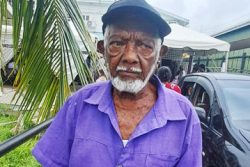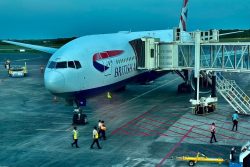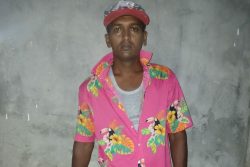– Persaud confirms
Minister of Agriculture Robert Persaud on Thursday confirmed that a controversial farmer was among the group of investors from the State of Roraima who recently visited Guyana.
Paulo Cesar Quartiero, a large-scale Brazilian farmer who is among a group recently ordered by the Brazilian Supreme Court to vacate the Indian reservation Raposa Serra do Sol, recently said that the Government of Guyana has proposed to lease him land for 99 years. Concerns have been raised about this since Quartiero has been described in the Brazilian and international media as the force behind “the movement of resistance of non-Indians” in the northern Brazilian State of Roraima, separated from Guyana by the Ireng and Takutu rivers.
Contacted about Quartiero’s claims, Persaud had said that investors from the State of Roraima visited recently to explore the availability of land for rice cultivation in Upper Takutu/Upper Essequibo (Region Nine).
When questioned on Thursday about whether Quartiero’s link to the resistance in Brazil would affect his investment proposals here Persaud said, “I will not be baited into discussing Brazil’s internal affairs; so I will not comment on the matter”.
Investment proposals, according to the Agriculture Minister, are approved based on “certain criteria”. Asked about the criteria, Persaud would only say “they are well established” and he further stressed that he would not address allegations made against Quartiero.
On March 19, in a 10-1 vote, the Brazilian tribunal’s judges reaffirmed the borders of the Raposa Serra do Sol reserve located in the State of Roraima, and ordered the expulsion of a group of rice farmers. A March 20 article published online by the Sydney Morning Herald said the Brazilian farmers had vowed to fight any attempt to force them out, and several stockpiled arms and threatened to blow up bridges and spike roads if police moved in.
Quartiero reportedly led the resistance of the non-Indian farmers. Reports in the May 2 online edition of Journal do Brasil said Quartiero left the reserve one day after the deadline given by the Supreme Court to vacate Raposa Serra do Sol. Brazilian police and soldiers during a 12-hour operation to remove non-indigenous residents from the Indian reservation had ordered Quartiero to leave.
The Raposa Serra do Sol resistance has become notorious and is being followed closely by several international organizations. A Rainforest Foundation, United States report sent to Brazilian authorities reported that “ten indigenous people in Raposa Serra do Sol were attacked and shot by a group of gunmen” hired by the leader of the rice growers in the area.
Reacting to Quartiero’s claim that the government of Guyana had proposed to lease land to him, Persaud had said on Tuesday: “A group of investors from the State of Roraima visited Guyana recently, to explore the availability of land for rice cultivation in the Region Nine area.
The government is willing to consider an acceptable investment proposal for rice and soya cultivation in the region. The rice is not to be sold on the local market but only for export to Brazil. Specific areas for cultivation were identified by the investors. No consideration will be given to land demarcated or to be demarcated for Amerindian communities. The availability of land areas is under review by the Guyana Lands and Surveys Commission.”
According to Persaud, several Amerindian communities are already cultivating rice in Region Nine on a small scale. The government, he had said, has concluded a project with the Spanish government on expanding rice cultivation in nine villages in Regions Nine and Eight (Potaro/Siparuni). However, Persaud did not say whether the introduction of large-scale rice cultivation in Region Nine has been discussed with the administrative body.
Instead, he had said, “Any private involvement in the sector will give a boost to rice production and allow for farmers and millers to tap into Brazil’s large rice market, especially with the impending opening of the Takutu Bridge.”
Asked again on Thursday whether the Ministry of Agriculture has considered the impact large-scale mechanized cultivation could have on the region’s ecosystem Persaud reiterated, “All investors are required to comply with all our national laws including the Amerindian Act, and Environmental Protection Act.” He refused to comment further.
He said conservation organisations like Iwokrama and Conservation International (CI) Guyana have not been informed of the possible project since the ministry has “envisaged” no role for them.
The government recently signed four technical cooperation agreements with the Brazilian authorities which are aimed at boosting agricultural development. This was reported in the May 6 edition of Stabroek News and sourced to a Government Information Agency (GINA) press statement.
On a recent visit to Brazil, GINA had said, Persaud finalised agreements for upland rice production, corn production, aquaculture and forestry. The cultivation of rice in the hinterland areas of Guyana is being catered for in the upland rice production project as the release noted that it is costly to import rice into those areas from the coastland.





